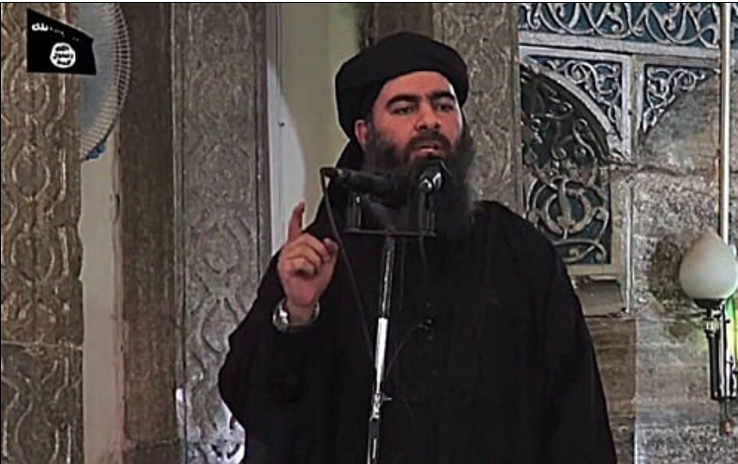A workshop took place at the London School of Economics on 31 May 2018, funded by the David Davies of Llandinam Fellowship

Read the Executive Summary below and the full report here
Executive summary
Convenor:
Dr Matthew Dixon (London School of Economics)
Speakers:
Professor Kristin Bakke (University College London)
Dr Cindy May (London School of Economics)
Professor Toby Dodge (London School of Economics)
Dr Chris Phillips (Queen Mary’s University of London)
Michael Stephens (Royal United Services Institute)
Professor Peter Neumann (King’s College London)
Dr Lars Berger (University of Leeds)
Dr Gilbert Ramsay (University of St Andrews)
On the 31st of May 2018, the LSE hosted a workshop entitled ‘The Islamic State in Retreat’. The workshop was sponsored by the David Davies of Llandinam Fellowship and brought together leading academics on the Middle East and international terrorism to explore the future of the Islamic State (IS) in light of the fall of its Caliphate. The workshop posed three main questions; how is IS adapting to the loss of its Caliphate, have the conditions in Syria and Iraq that enabled its spectacular rise been addressed, and what does this tell us about the future of IS? Panellists addressed these questions by looking the behaviour of similar groups, the aftermath of civil wars in other states, the political and social context in the Middle East, as well as the actions of IS.
The panellists agreed that IS has been significantly degraded and no longer poses a meaningful threat in either Syria or Iraq, but it is shifting to a clandestine, network-based movement that will be difficult to eradicate completely and continue to represent a real terrorist threat, both in the Middle East and beyond. There was also broad agreement on the deep structural problems afflicting the Middle East, including the on-going conflict in Syria, geo-political rivalries, sectarian tensions, as well as weak and repressive governance. These conditions enabled the rise of IS in the build-up to 2014 and may do so again if left unresolved.
Key findings
- Inside Syria and Iraq, IS has been significantly weakened and no longer poses a strategic threat to either government. It has followed the pattern of many groups in retreat, reverting to clandestine cells and focusing on terrorist-type violence to maintain relevance.
- The loss of its Caliphate has undermined much of IS’s global appeal, but there continues to be a hard-core of supporters loyal to its cause. It is evolving from an hierarchical organisation to a global network and movement in much the same way as al Qaeda.
- This transition will enable IS to sustain momentum in the form of terrorist activity. The legacy of its foreign fighter cadre and on-line activity will also provide IS (or an evolution of the group) with the foundations to re-emerge if and when conditions become favourable once again, be it in Syria, Iraq, or another state in the region.
- There are some positive signs in the region to suggest there will be no repeat of the conditions that enabled IS’s rise. Regional governments and religious authorities are increasingly recognising the ideological roots of Salafi-jihadism. The impetus for change in Iraq is strong and in Syria, while the conflict drags on, jihadist actors are in retreat.
- The likelihood of significant and enduring change in the region, however, is limited. The future of the Syrian conflict is extremely difficult to predict, and multiple pathways could benefit jihadists. The entrenched role of sectarianism and corruption in Iraq will hinder efforts to reform its institutions. Regional governments are falling back on increasingly repressive governance and political institutions continue to lack legitimacy.
- The history of the region and other conflict zones demonstrates that the failure to address these structural problems in a manner that reflects regional social and economic dynamics will sustain support for violent Islamist groups. In the worst case scenario, these tensions will increase the likelihood of another major conflict that could provide the backdrop for the re-emergence of a significant Salafi-jihadist insurgency that takes on IS’s mantle.
Recommendations
- Counter-terror operations need to focus on the key nodes that will hold the remnants of IS’s movement together and attract new affiliates and recruits. In the West, individuals involved in Syria and Iraq, or with a longer history of participation in radical jihadism, will be key for sustaining the global movement. Tactical cooperation with states in the Middle East and North Africa should focus on jihadi organisations that link local groups to the transnational movement.
- The West also needs to build the credibility and legitimacy of political and social institutions on the region, not just focus on security-sector support. These broader public institutions have proven crucial in stemming violence in other post-conflict zones, and country-experts make it clear that the same will apply in the Middle East.




